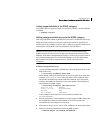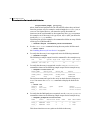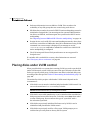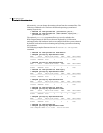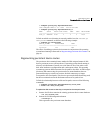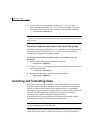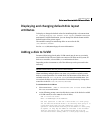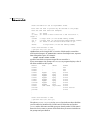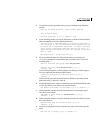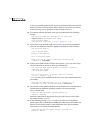
95Administering disks
Changing the disk-naming scheme
■ Persistent simple or nopriv disks in the boot disk group
■ Persistent simple or nopriv disks in non-boot disk groups
These procedures use the
vxdarestore utility to handle errors in persistent
simple and nopriv disks that arise from changing to the enclosure-based naming
scheme. You do not need to perform either procedure if the devices on which
any simple or nopriv disks are present are not automatically configured by
VxVM (for example, non-standard disk devices such as ramdisks).
Note: The disk access records for simple disks are either persistent or
non-persistent. The disk access record for a persistent simple disk is stored in
the disk’s private region. The disk access record for a non-persistent simple disk
is automatically configured in memory at VxVM startup. A simple disk has a
non-persistent disk access record if autoconfig is included in the flags field
that is displayed by the
vxdisk list disk_access_name command. If the
autoconfig flag is not present, the disk access record is persistent. Nopriv
disks are always persistent.
Note: You cannot run vxdarestore if c#t#d# naming is in use. Additionally,
vxdarestore does not handle failures on persistent simple/nopriv disks that are
caused by renaming enclosures, by hardware reconfiguration that changes
device names. or by removing support from the JBOD category for disks that
belong to a particular vendor when enclosure-based naming is in use.
For more information about the
vxdarestore command, see the
vxdarestore(1M) manual page.
Persistent simple or nopriv disks in the boot disk group
If all persistent simple and nopriv disks in the boot disk group (usually aliased as
bootdg) go into the error state, the
vxconfigd daemon is disabled after the
naming scheme change.
To remove the error state for persistent simple or nopriv disks in the boot
disk group
1 Use vxdiskadm to change back to c#t#d# naming.
2 Enter the following command to restart the VxVM configuration daemon:
# vxconfigd -kr reset



